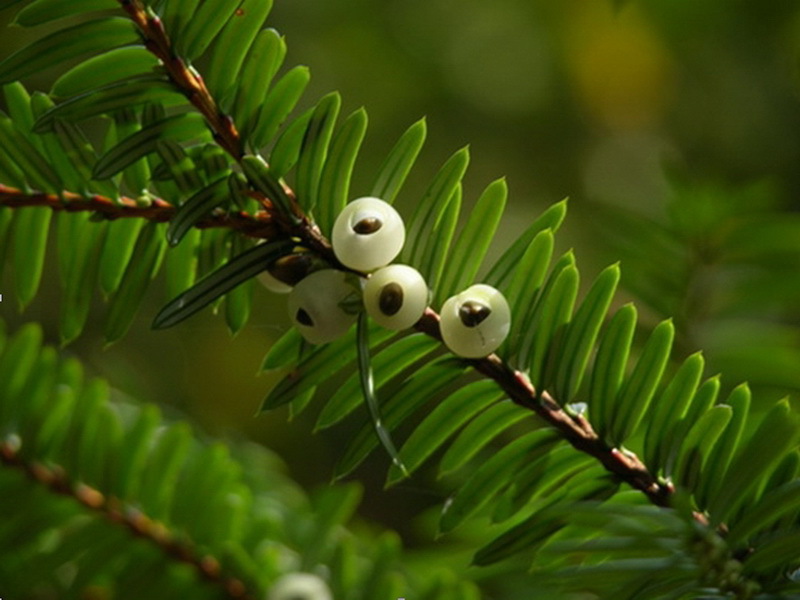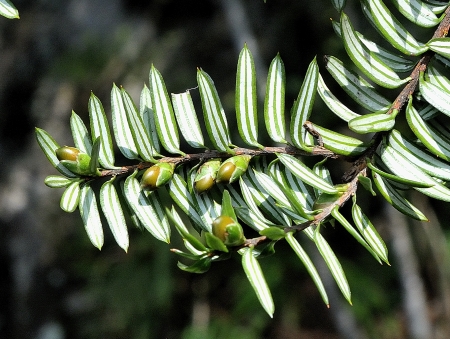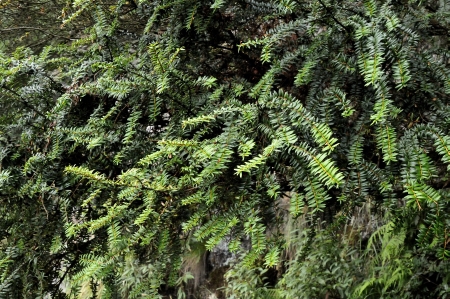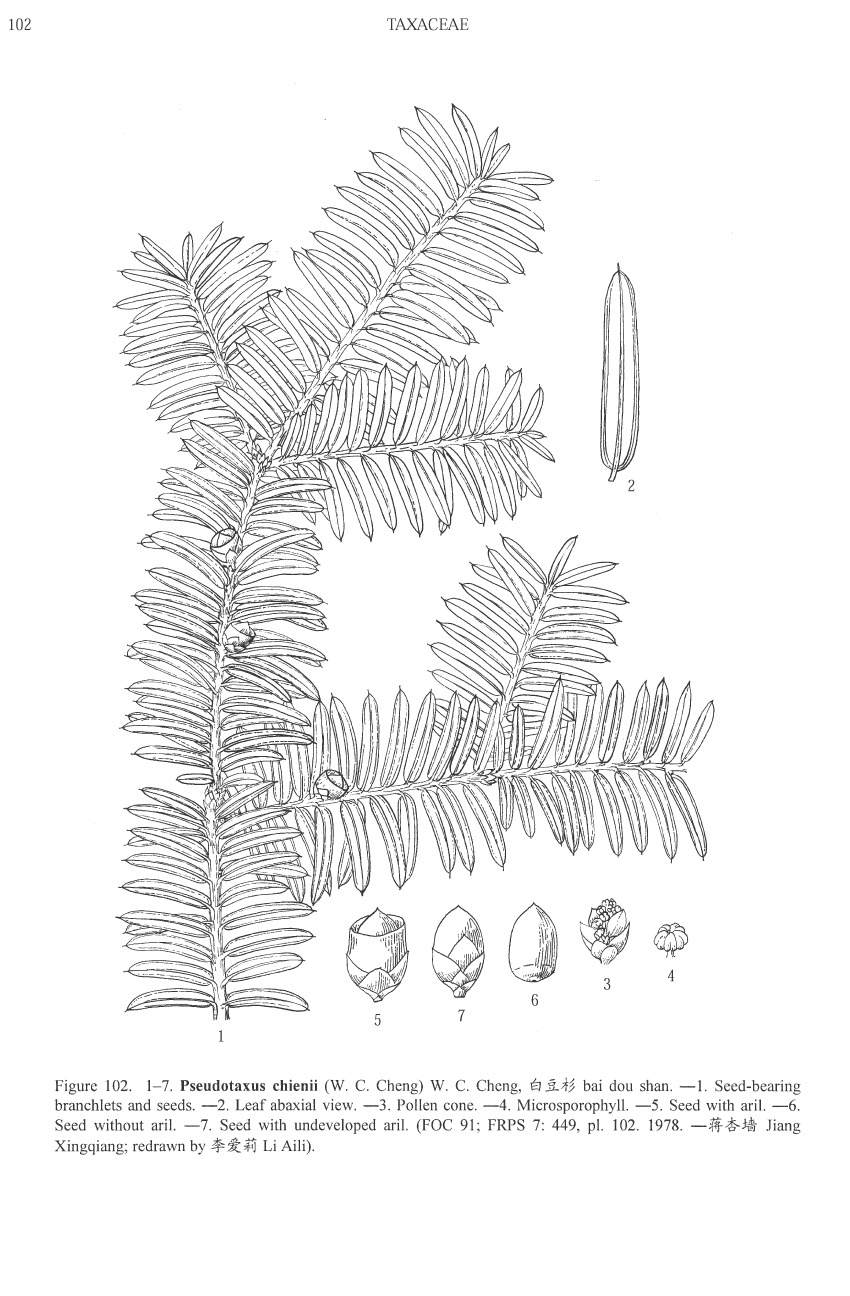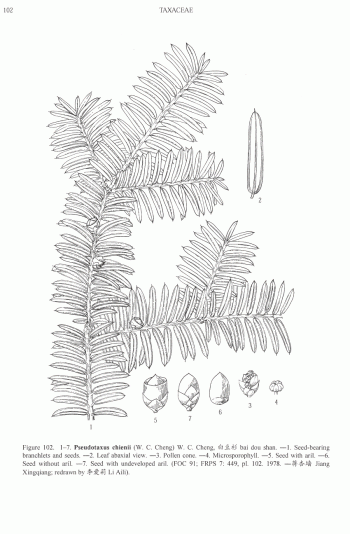
Pseudotaxus chienii, as described in 1947 by Wan-chun Cheng in Research Notes, Forestry Institute; National Central University, Nanking, China is commonly known as White-berry or White-cup yew; as well as ç™½è±†æ‰ (báidòushÄn [literally "white bean conifer") in the Chinese language. The species name honors Sung Su Chien (born 1885), who collected the type specimens in Zhejiang province, China.
Pseudotaxus liana was described from Guangxi and at the same time recorded from Hunan and Jiangxi. In the protologue (Silba, Phytologia 81: 327. 1996, as "liiana"), it was said to differ from P. chienii in its broadly ovate or ovate-oblong leaves, measuring 0.52 to 1.12 inch (1.3 - 2.8 cm) long and 0.14 to 0.22 inch (3.5 - 5.5 mm) wide, which are thick and leathery; it was also compared with two species in the Podocarpaceae: Podocarpus brassii Pilger, from Indonesia (Irian Jaya) and Papua New Guinea, and Prumnopitys harmsiana (Pilger) de Laubenfels, from South America. Further study is needed to ascertain whether it is distinct from Pseudotaxus chienii and, if so, to settle its generic, and possibly also familial placement. If it is distinct, then some of the records of P. chienii may in fact belong to the new species.
Description. White-berry yew is an evergreen coniferous species of shrub or small tree that grows to mature heights of 12 feet (4 m) tall, with a trunk up to 12 inches (30 cm) wide, measured at breast height, with a spreading to rounded crown. It is a dioecious conifer with male and female fruiting bodies growing on separate trees.
Hardy to UDSA Zone 8 - cold hardiness limit between 10° and 20°F (-12.1° and -6.7°C).
It is a rare species that is threatened more by general habitat destruction than by direct exploitation, mostly because that wood is of too low of volume for construction purposes, rather it is used as a carving material and for making utensils.
